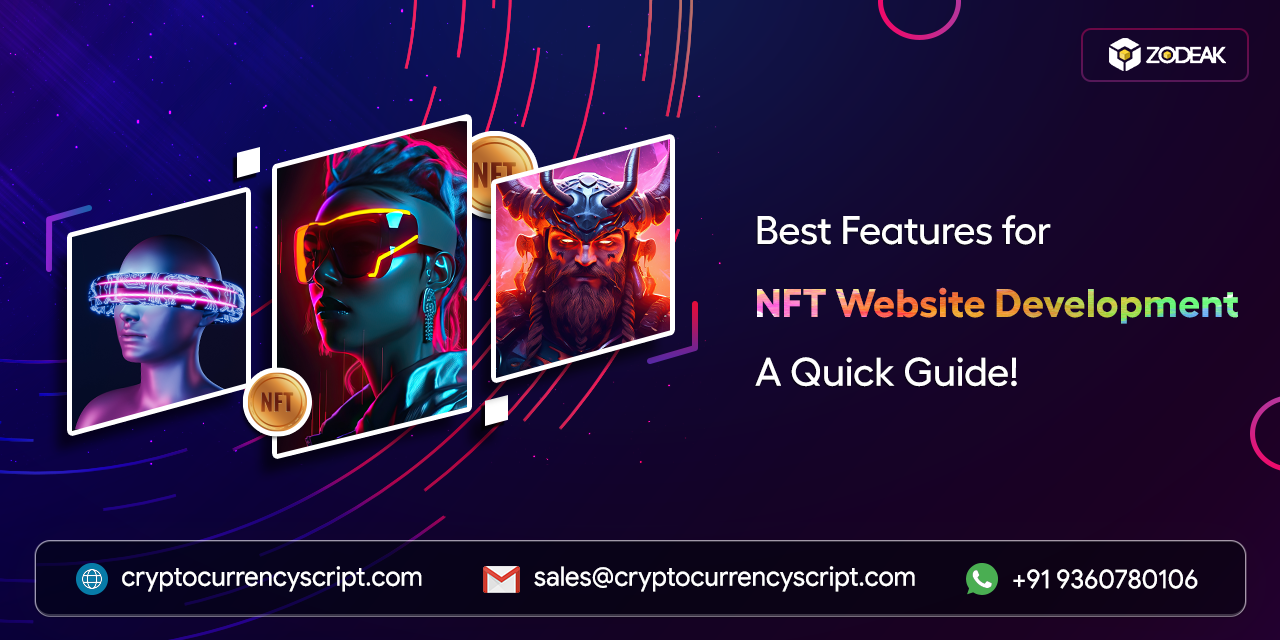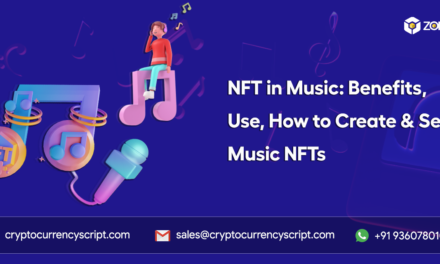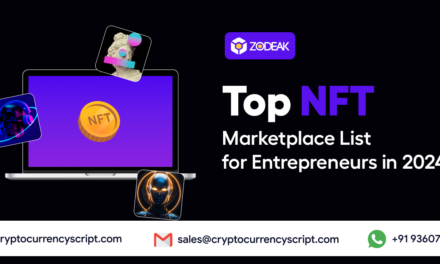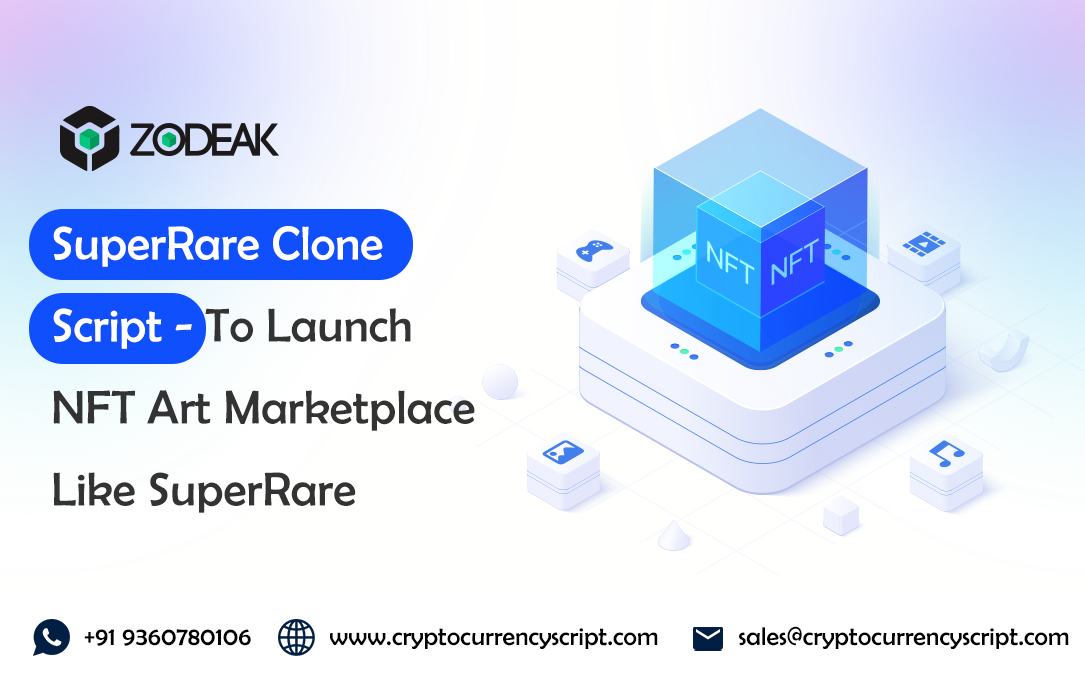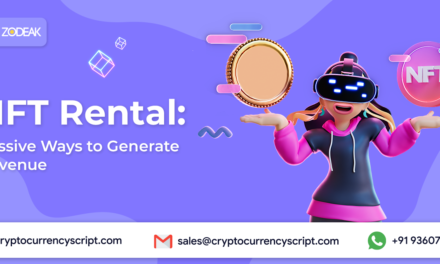Today, non-fungible tokens have gained massive traction across the crypto space due to an increase in creators and buyers. In response to this multifold growth, startups, and entrepreneurs are actively seeking opportunities to engage with companies specializing in NFT website development.
Let’s start with the fundamentals and go through the most popular elements of the NFT website before diving deeper into the subject.
What is NFT Website Development?
NFT website development is creating and deploying an exclusive online marketplace for creators and collectors of non-fungible tokens. These NFTs are unique crypto tokens that represent ownership of various digital collectibles or content, such as artwork, music, and more.
Generally, these NFT websites provide creators a marketplace to trade their digital content in NFTs, while collectors (buyers) can acquire these NFTs using cryptocurrencies. Minting, listing NFTs on the websites, and transactions, typically incur charges.
The marketplace facilitates bidding, and auctions, and provides royalties to creators. Also, they offer tools that enable creators to manage and track their NFTs, while buyers can explore and collect the NFTs based on different categories, genres, and artists.
Therefore, NFT website development has received a lot of attention worldwide in recent years. They offer an effective way for artists, content creators, and collectors to monetize and trade digital assets.
Must-Have Features for NFT Website Development
The features may differ based on the NFT website that hosts the marketplace platform. However, here are some of the essential features that you may include in your solution:
NFT Farming
NFT farming involves users earning rewards by depositing cryptocurrencies to farm NFTs on the marketplace. The quantity of staked crypto assets, the duration of the staking period, and various other factors influence the number of NFTs that are obtained.
NFT Trading Pairs
NFT trading pair allows users to trade NFTs directly with other cryptocurrencies on the marketplace. Individuals have the option to purchase NFTs using cryptocurrencies, or other digital assets. The availability of trading pairs may vary depending on the NFTs listed on the market.
Automatic Bidding
The automatic bidding feature assists buyers in determining their maximum bid in the auction. When the highest bid is outbid, the algorithm automatically raises the bid by a predetermined amount. The highest bidder wins the NFTs and the transaction takes place at the end of the auction.
NFT Listing
NFT listings include name, description, image or video, price, and other pertinent characteristics. It is the principal means by which customers discover and evaluate available NFTs.
To assist buyers in finding NFTs that match their interests, listings may be divided into categories such as art, music, gaming, or collectibles.
NFT Listing Status
NFT listing status provides users with a clear picture of an NFT listing’s availability and status. It assists buyers in determining which NFTs are for sale. Also, enables sellers to follow the status of their postings and effectively manage their inventory.
This NFT listing status act as an indicator and may include active, sold, delisted pending, hidden, and more.
Fractionalized NFTs
Fractionalized NFT is a unique feature that allows customers to buy and sell fractions of NFTs. Users who do not have the funds to purchase an entire NFT can invest in and own a piece of NFTs through this option. This is one of the most popular features you can include in NFT website development.
In most cases, the owner of the NFT must first list it on the platform before it may be fractionalized on the market. Once NFT fractions are offered, users can purchase them. Each fraction’s value is determined by dividing the entire value of the NFT by the total number of accessible fractions.
Search & Filter
Search and Filter helps users to look for and filter NFTs based on certain parameters. This feature is crucial for assisting purchasers in sorting through the vast selection of NFTs listed on a website and locating those that are relevant to their interests.
The search option helps users to look for specific terms, such as an artist’s name, an NFT title, or a specific theme or genre. The search bar allows the customer to rapidly find the necessary NFTs without having to scroll through endless pages.
Filter option: Helps to narrow down search results by characteristics such as price range, NFT type, category, and rarity. This feature allows buyers to filter the NFTs that meet their criteria, making the search process more effective.
Rating & Review
Rating and review feature assist prospective buyers and sellers in evaluating these marketplaces and making educated judgments about which platforms to use. To provide an overall assessment of each marketplace, these systems often use a combination of user ratings, reviews, and expert analysis.
These are the top-rated feature for NFT website development that you should be aware of. It should be noted that some functionality may differ from platform to platform. So, before you start building your marketplace, make a list of all the popular brands. Also, make a note of the top-rated elements of the NFT website to better your business.
Final words!
Hope you have gained a good understanding of the NFT website development and its features that we have discussed in this blog. Armed with this knowledge, you can confidently approach any NFT marketplace development company and create your NFT marketplace platform with advanced features and launch it!
If you have any questions regarding NFT-based business, don’t hesitate to click the button below. Our experts will promptly address your queries. See you in the next blog!

